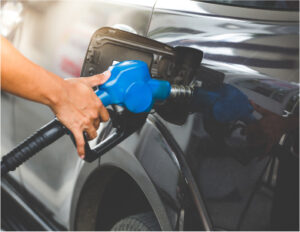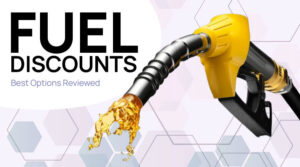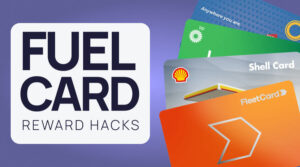Applying for a fuel card in Australia is easy, but choosing the right one is where it gets interesting. Whether you’re running a small fleet or just want to track fuel spend better, this guide explains what you need to apply, how it all works, and how to pick a card that actually saves you money.
First up: What is a fuel card?
Think of it like a business charge card, but for fuel and vehicle expenses. Instead of paying with your personal card at the servo, you swipe your fuel card. Discounts are applied automatically, and everything shows up on a single monthly invoice, with GST clearly shown.
You pay the bill once a month. Easy. Fuel cards are especially handy if you’re managing multiple vehicles, but plenty of solo tradies and contractors use them too.
What do you need to apply for a fuel card?
Most providers make it really simple. You’ll need:
- An ABN
- A few business or vehicle details
- Basic ID or licence
- A payment method for the monthly bill
You don’t need to run a big company; even if you’re a sole trader or a one-person operation, you can still apply.
In most cases, you just need to have had your ABN active for 6-12 months. Some providers may ask for proof that your business is trading (like recent invoices or bank activity), but many will approve you as long as you’re registered and can provide ID and payment details.
If you’re brand new or still setting up, you may be asked to start with lower spend limits, which you can increase later once you’ve built a little history.
How to get a fuel card (application process)
Applying for a fuel card in Australia is quick, most providers let you do it fully online in just a few steps.
1. Choose your card. Decide what matters most, wide acceptance (FleetCard), rewards (Shell Card).
2. Fill out the application form. You’ll need to provide:
- Your ABN
- Business and contact details
- Driver or vehicle info (if assigning individual cards)
- Bank or credit card details for billing
3. Submit and wait for approval. Most applications are reviewed within 1–2 business days. Some may approve you on the spot, especially if you’re a sole trader with an active ABN.
4. Cards are issued and posted to you. Once approved, your cards are printed and sent out. Expect delivery within 5–10 working days.
5. Set controls (optional). You can log in to the online dashboard to:
- Set spending limits
- Choose fuel-only or allow extras like tolls and car washes
- Monitor usage and download invoices
Key considerations for choosing the right fuel card
There are a lot of options out there, but here are the things that actually matter.
Where you fill up
If you stick to one brand, something like Shell Card could work well. It’s accepted at Shell, Coles Express and OTR sites. If you want flexibility, FleetCard gives you access to over 6,000 stations across brands like Shell, Ampol, BP, 7-Eleven, United and Mobil.
How much you’ll save
Most cards offer around 2–4c per litre in ongoing discounts. Some promo offers go up to 6–7c per litre, especially for new customers. Shell Card rewards you with Flybuys points, while BP Plus offers Qantas points. FleetCard doesn’t have a rewards program, but their broader access and spend controls make up for it.
What you can buy
Need to pay for tolls, car washes or servicing? Some cards let you do that, others stick to fuel only. Shell and FleetCard both offer configurable purchase controls, so you decide what each card can or can’t be used for.
Tools and tracking
Look for fuel cards that make life easier at tax time. You’ll want:
- ATO-compliant invoices
- Optional spend limits per driver or vehicle
- A mobile app or online dashboard
Shell Card offers Shell Card GO for digital payments and receipts. FleetCard has a clean interface and great reporting tools.
Which fuel card is best for SMEs?
For small and medium-sized businesses, the best fuel card strikes a balance between network coverage, real discounts, and easy admin. You want something that works across multiple fuel brands (so your team isn’t stuck hunting for one type of servo), gives you control over spend, and offers a simple way to track fuel expenses come tax time.
FleetCard is often the top choice for SMEs needing flexibility across Australia, while Shell Card is ideal for those who mainly use Shell and want Flybuys rewards and in-app payment options. Both offer strong reporting tools and purchase controls, but they suit slightly different needs.
| Feature | FleetCard 🔥 | Shell Card 🔥 | BP Plus | 7-Eleven Fuel Pass |
| Accepted Fuel Brands | Shell, BP, Ampol, 7-Eleven, Mobil, United & more | Shell, Coles Express, Reddy Express, OTR | BP only | 7-Eleven only |
| Total Accepted Sites | 6,200+ | 1,500+ | 1,400+ | 640+ |
| Ongoing Fuel Discount | 1c at 7-Eleven/Ampol, 3c at Shell | 2c (reg) / 4c (premium) | 2c (reg) / 3c (premium) | 1c (reg) / 2c (premium) |
| Promo Discount (if available) | Up to 6c Shell / 3c 7-Eleven | Up to 7c per litre | Up to 6c per litre | Up to 7c per litre |
| Rewards Program | None | Flybuys points | Qantas Business Rewards | Everyday Rewards |
| Monthly Card Fee | $5.99 (promo $2.99) | $2.50 (promo $0) | $2.95 | $2.50 |
| Non-Fuel Purchases | Yes (configurable per card) | Yes (servicing, car wash, in-store if enabled) | Yes (extras allowed) | Yes (basic in-store spend) |
| Mobile App | FleetCard | Shell Card GO | BP Plus App | My 7-Eleven App |
| Ideal For | Mixed-brand fleets, wide access | Shell loyalists, reward seekers | BP customers, Qantas earners | Budget-focused micro fleets |
How much can you save with a fuel card?
Let’s say your SME operates 3 vehicles, each using about 1,000 litres of fuel per month (so 3,000L total). Here’s how the savings stack up based on the ongoing discount rates:
| Fuel Card | Avg Ongoing Discount | Monthly Fuel Volume | Estimated Monthly Savings | Estimated Annual Savings |
| FleetCard 🔥 | 3c/L (Shell) | 3,000L | $90 | $1,080 |
| Shell Card 🔥 | 2c/L (regular)
4c/L (premium) |
3,000L | $60
$120 |
$720
$1,440 |
| BP Plus | 2c/L (regular) | 3,000L | $60 | $720 |
| 7-Eleven Fuel Pass | 1c/L (regular) | 3,000L | $30 | $360 |
TIP: Promo discounts (up to 6–7c/L) could double or triple these savings during the first 6 months, so it pays to apply during an offer period.
What Else Affects Savings?
- Fuel type: Premium fuel usually gets a higher discount (e.g. 4c/L with Shell Card)
- Promo offers: Shell and FleetCard often run 6–7c/L promos with waived fees
- Card fees: Always factor in the monthly fee (e.g. $2.50–$5.99) when calculating net savings
- Where you fill up: Bigger networks mean fewer detours and better value per litre
So which fuel card should you pick?
- Go with FleetCard if you want freedom to fill up anywhere, track everything in one place, and set limits easily.
- Choose Shell Card if you’re loyal to Shell, want Flybuys points, and like the idea of paying from the app.
Both are great options, it just depends on how you drive.
Ready to apply?
Looking for a fuel card that fits your business? Check your eligibility for FleetCard or Shell Card today and start saving with every fill-up.

Check Your Fuel Card Eligibility
FAQs
Do you need to run a company to get a fuel card?
Nope. Sole traders and ABN holders are welcome to apply, even if you’re a one-person show.
How long does it take to get approved?
Usually within a couple of business days. Some providers set you up on the same day.
Are there any joining fees?
Most cards don’t have joining fees, but there is typically a monthly card fee. Some fuel card providers waive these monthly fees for the first few months too.
Can you use a fuel card for non-fuel purchases?
Yes, depending on the card and your settings. Servicing, car washes, tolls and snacks may all be on the table.


